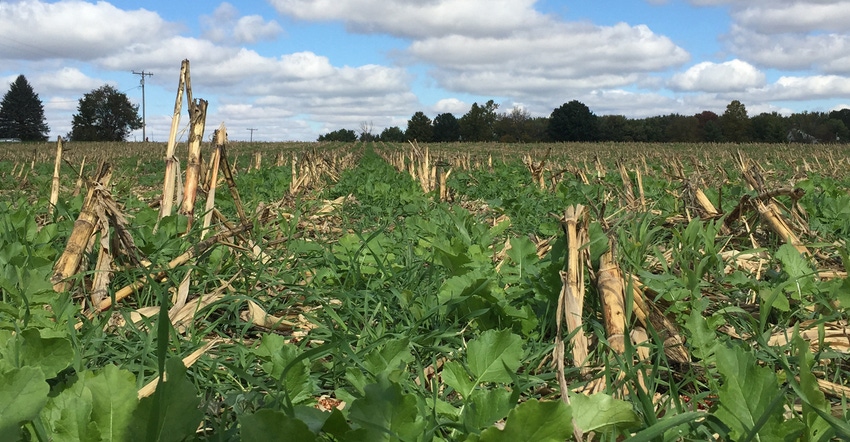March 29, 2018

By Tony Bailey
Planting cover crops requires a year-round strategy these days. This is especially true when selecting weed control programs now and making decisions on what cover crop seed to order for the fall. Now is not too early to start planning and preparing for cover crops that will be seeded this fall.
Especially important this time of year is selection of your cash-crop weed control program and potential carryover impacts to your cover crop. If you are planning to grow cover crops, make sure you know the weed problems in each field, and work with your local crop protection provider to find herbicides to match your needs. Make sure these herbicides will leave little residual that will affect cover crop germination and growth. It takes planning, so read herbicide labels carefully.
Although most herbicide labels usually don’t specifically mention cover crops, there are some rules of thumb. To name a few: If there are long interval restrictions for cereal grains, these may impact grass cover crops such as cereal rye or oats. Long plant-back restriction intervals for legumes such as alfalfa and red clover may impact legume cover crops such as crimson clover and hairy vetch.
Line up seed
Now is also a great time to plan for purchasing cover crop seed for this fall. Numerous functions come into play when deciding on the appropriate cover crop species to plant, such as erosion control, nitrogen source, nutrient scavenging, soil building, or grazing and foraging.
Determining the purpose and having a goal aids in selecting the appropriate cover crop seed mix and seeding rates. Seeding methods will also help to determine seeding rates. Cover crop establishment and termination always factor into your overall plan.
It’s not too early to develop this plan and place the seed order to ensure you’ll have adequate amounts of the right seed for your farm this fall. Don’t wait to order seed until just prior to planting your cover crop, or you might be forced to settle for whatever seed is available.
Early planting windows
Establishing cover crops as early as possible will improve the benefits realized for the intended function by increasing growth prior to the first killing frost. The establishment plan should include some opportunities to ensure an adequate seeding window, such as selection of early-maturing varieties, silage and earlier-harvested specialty crops or fields likely to be harvested first. Set yourself up now for a successful cover crop seeding to truthfully evaluate their benefits on your farm.
Bailey is a state conservation agronomist with the Natural Resources Conservation Service in Indiana. NRCS is part of the Indiana Conservation Partnership, which provides articles for the Salute Soil Health column.
You May Also Like




